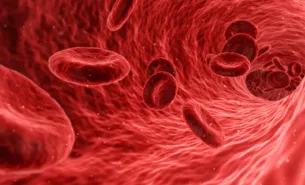In the vast, remoteness of the Arctic, few have the opportunity to gather data on the environmental conditions over time or decipher the long-term effects of climate change. What is required? A considerable period to observe, a nearly autonomous method or actor for collection, a robust character to withstand the harsh surroundings. Researchers from Aarhus University in Denmark are tackling this issue through an interdisciplinary NordForsk project. At DanMAX beamline, the group will analyse a narwhal tusk to determine its chemical composition and biomineralization, both important potential markers of the changing environment.
Significant, accelerated signs of climate change have been reported in the Arctic and Antarctic zones, which research shows impact global climate. Scientists are looking at different ways to interpret the terrestrial and oceanic changes occurring in these areas, and how the change affects native wildlife. The described NordForsk project, developed by researchers from Denmark, Greenland and Sweden, seeks to elucidate the structure and formation of the narwhal tusk, and map the full life history of the animal through the growth lines along the full length of the tusk.

“The tusk grows continuously and, like a tree, has seasonal growth patterns that show up as lines in the tusk. By mapping their spacing, we hope to obtain information on environmental conditions, for example, a very hard year food-wise should lead to less growth and then in turn thinner growth layers. This is a direct way of following growth conditions during the lifetime of the animal,” said Henrik Birkedal, researcher and professor in the Department of Chemistry at Aarhus University. “We hope to correlate with known environmental conditions from meteorological observation, and thereby build a correlation between growth and environmental conditions.”
Narwhals are medium-sized toothed whales, with males typically characterized by a long, protruding tusk. The cetacean is native to the Arctic region. The sample was sourced from a monitored Greenlandic hunt and exported to the EU for analysis with obtained CITES permits.
The experimental work, recently begun at DanMAX beamline, includes scanning approximately 100 micrometres thick sections of the tusk across growth lines using position-resolved X-ray fluorescence (XRF) and X-ray powder diffraction (XRD). XRD can detect the presence and amounts of minerals whereas XRF can reveal information on chemical composition. The group seeks to determine the element distribution for calcium, strontium, and zinc across the growth layers, and learn what impact layer formation has on the biomineralization process.

Deeper understanding of the tusk structure may open additional paths of exploration as well, according to Birkedal. “In human teeth, the cementum, or bone-like layer is rather thin whereas in the tusk it is abundant. We therefore hope to learn more about cementum structure and hypothesize that this will be transferable to human teeth.”
Funding for the research group’s NordForsk project is provided by the Nordic Council of Ministers, with aims to increase Nordic collaboration for research and research infrastructure.




